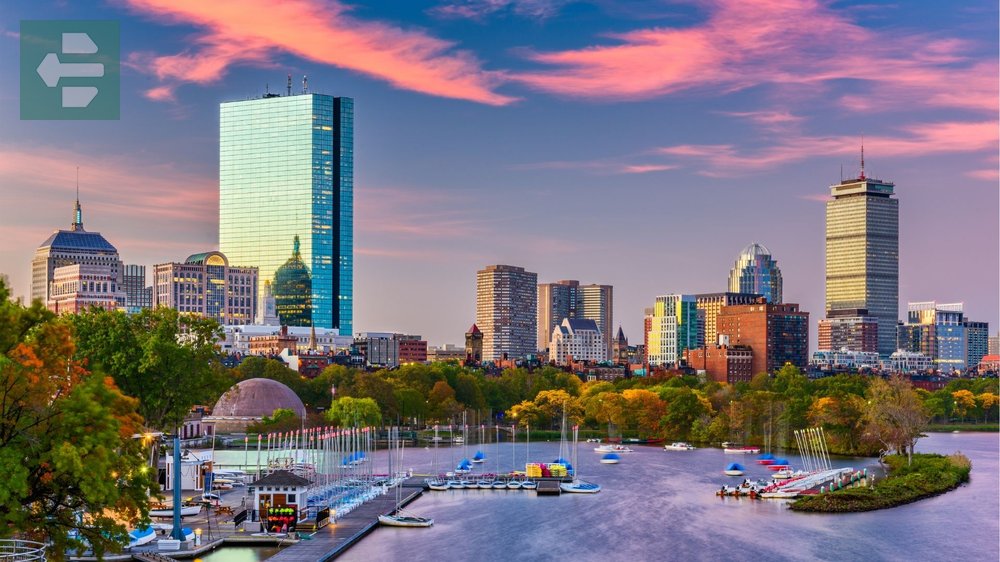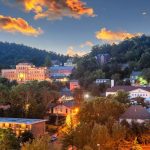New England offers America's most concentrated collection of historic charm and natural beauty. From Acadia National Park's rugged coastline to Boston's cobblestone streets and Cape Cod's windswept beaches, the region packs centuries of stories into six compact states. Martha's Vineyard, Newport, and the White Mountains each tell different chapters of the American story.
Keep reading as we uncover the best places to visit in New England that blend history, nature, and authentic experiences into unforgettable memories.
List of Contents
- 1. Acadia National Park and Bar Harbor, Maine: Where Mountains Meet the Sea
- 2. Newport, Rhode Island: Gilded Age Grandeur
- 3. Cape Cod, Massachusetts: America's Outer Reach
- 4. Martha's Vineyard, Massachusetts: Island Time Perfected
- 5. Mystic, Connecticut: Maritime History Lives Here
- 6. Kennebunkport, Maine: Presidential Seaside Retreat
- 7. Portsmouth, New Hampshire: Seaport with Soul
- 8. White Mountains, New Hampshire: Granite State Heights
- 9. Stowe, Vermont: Alpine Village Perfection
- 10. The Berkshires, Massachusetts: Cultural Countryside
- 11. Burlington, Vermont: College Town by the Lake
- 12. Boston, Massachusetts: Revolutionary History Walks
- 13. Salem, Massachusetts: Beyond the Witch Trials
- 14. Woodstock, Vermont: New England's Perfect Village
1. Acadia National Park and Bar Harbor, Maine: Where Mountains Meet the Sea
Acadia sits where granite peaks plunge directly into the Atlantic. The park covers 47,000 acres of Mount Desert Island, with Cadillac Mountain offering the first sunrise in America from October through March.
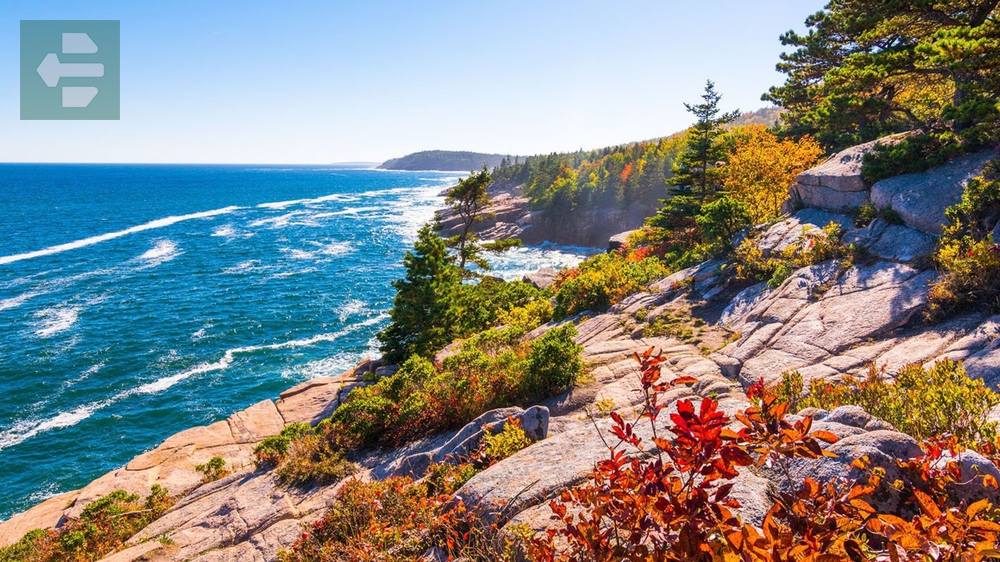
Bar Harbor serves as the gateway town. Its Main Street fills with the scent of fresh lobster rolls and the sound of boat horns echoing across Frenchman Bay.
The Park Loop Road winds 27 miles through forests and along clifftops. Thunder Hole creates a natural percussion when waves crash through the narrow inlet. Time your visit for two hours before high tide for the most dramatic show.
Quick Facts:
- Peak Season: June-October
- Getting There: Fly to Bangor, drive 1 hour
- Entry Fee: From $30 per vehicle
- Suggested Stay: 3-4 days
- Key Spots: Cadillac Mountain, Thunder Hole, Jordan Pond
2. Newport, Rhode Island: Gilded Age Grandeur
Newport preserves America's Gilded Age in stone and marble. The mansions along Bellevue Avenue were built as summer “cottages” by families whose names still grace New York's financial district.
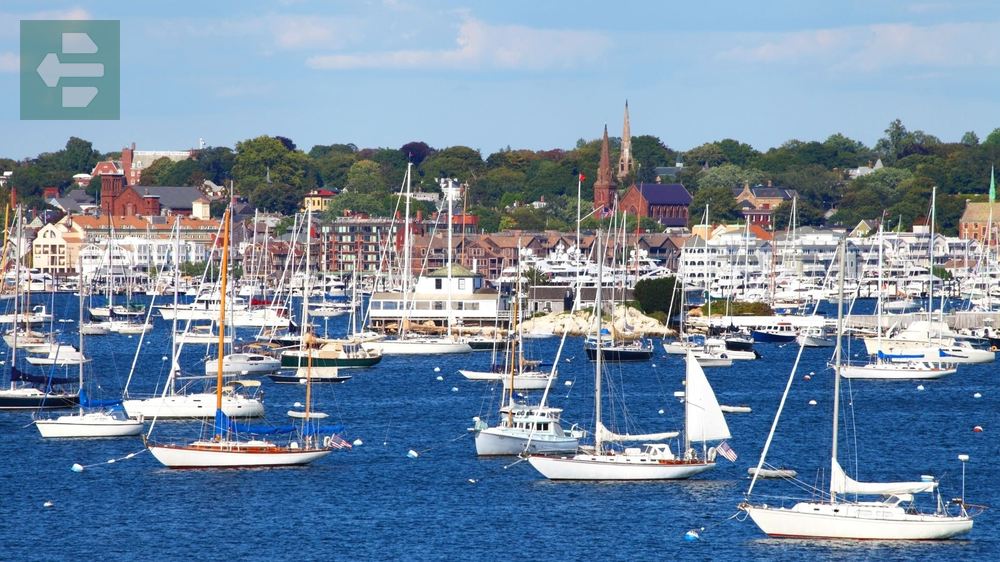
The Breakers stands as the crown jewel—a 70-room Italian Renaissance palace that Cornelius Vanderbilt II called home. Its Great Hall soars 45 feet high, decorated with platinum and gold leaf.
Walk the Cliff Walk, a 3.5-mile public path that runs between the mansions and the sea. The trail offers glimpses into private gardens while Atlantic waves crash against the rocks below.
Quick Facts:
- Peak Season: May-October
- Getting There: Drive from Boston (1.5 hours) or fly to Providence
- Entry Fee: Mansion tours from $26
- Suggested Stay: 2-3 days
- Key Spots: The Breakers, Cliff Walk, International Tennis Hall of Fame
3. Cape Cod, Massachusetts: America's Outer Reach
Cape Cod curves into the Atlantic like a flexed arm, creating 560 miles of varied coastline. The Cape Cod National Seashore protects 40 miles of pristine beaches and dunes.
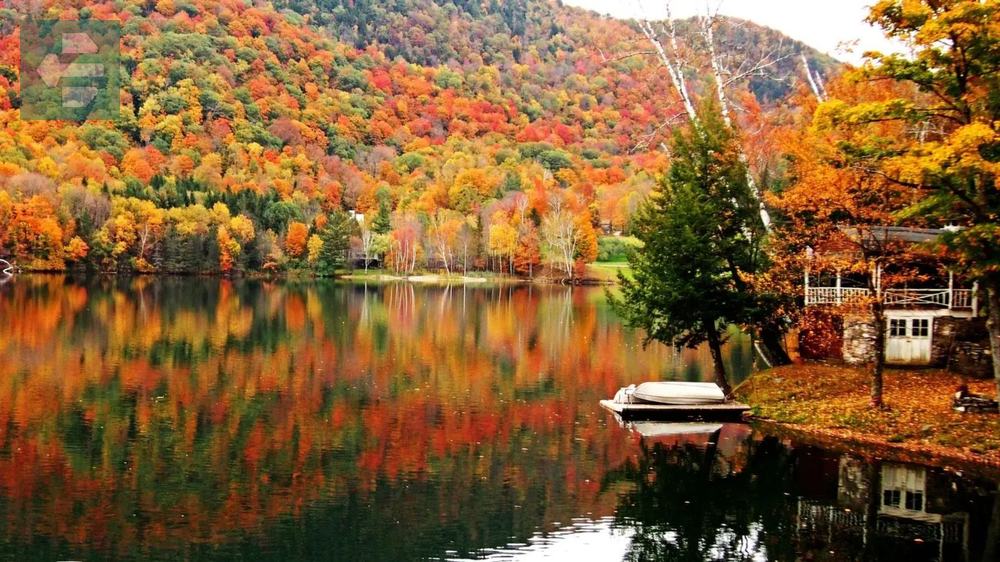
At Truro, I watched the sun rise over the Atlantic while the moon still hung in the western sky. That moment of simultaneous day and night captures why Cape Cod has inspired artists for generations.
The Outer Cape towns—Wellfleet, Truro, and Provincetown—each maintain distinct personalities. Wellfleet hosts the best oysters, while P-town pulses with art galleries and nightlife year-round.
Quick Facts:
- Peak Season: June-September
- Getting There: Drive from Boston (1.5 hours)
- Entry Fee: Beach parking from $25
- Suggested Stay: 4-5 days
- Key Spots: Provincetown, Wellfleet, Race Point Beach, Cape Cod Light
4. Martha's Vineyard, Massachusetts: Island Time Perfected
Martha's Vineyard sits seven miles off Cape Cod, accessible only by ferry or private boat. The island moves at its own pace—no chain restaurants, no traffic lights, just six towns connected by winding roads.
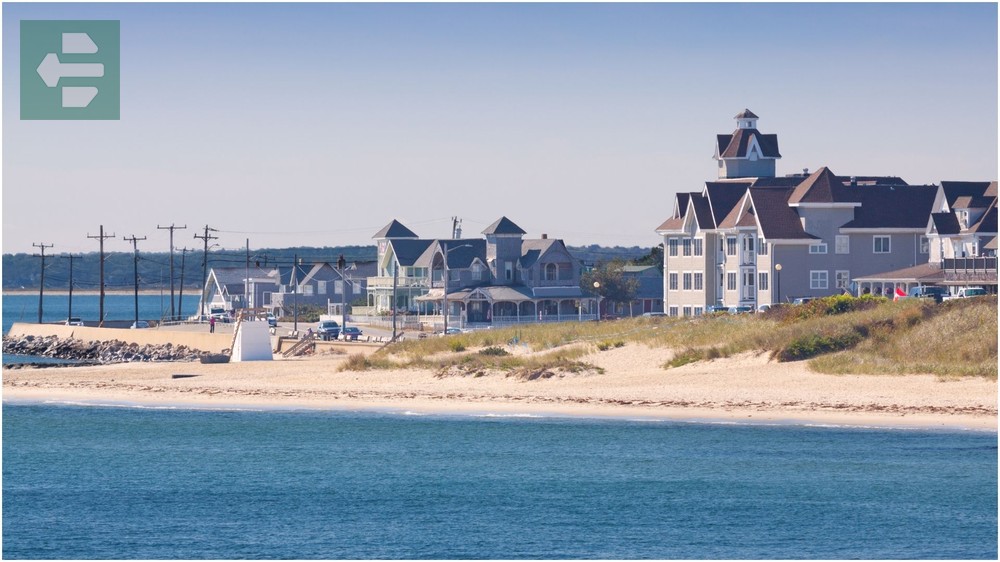
Edgartown's white captain houses line harbor streets that haven't changed much since whaling days. Oak Bluffs features the famous gingerbread cottages, painted in every color imaginable.
Up-island (west side) stays quieter and more rural. Aquinnah's clay cliffs glow orange at sunset, while Chilmark's stone walls divide pastures that have grazed sheep for three centuries.
Quick Facts:
- Peak Season: June-September
- Getting There: Ferry from Woods Hole (45 minutes)
- Entry Fee: Ferry from $8.50 per person
- Suggested Stay: 3-4 days
- Key Spots: Edgartown, Oak Bluffs, Aquinnah Cliffs, Menemsha
5. Mystic, Connecticut: Maritime History Lives Here
Mystic preserves New England's maritime heritage along the Mystic River. The Mystic Seaport Museum recreates a 19th-century coastal village with working shipyards and historic vessels.
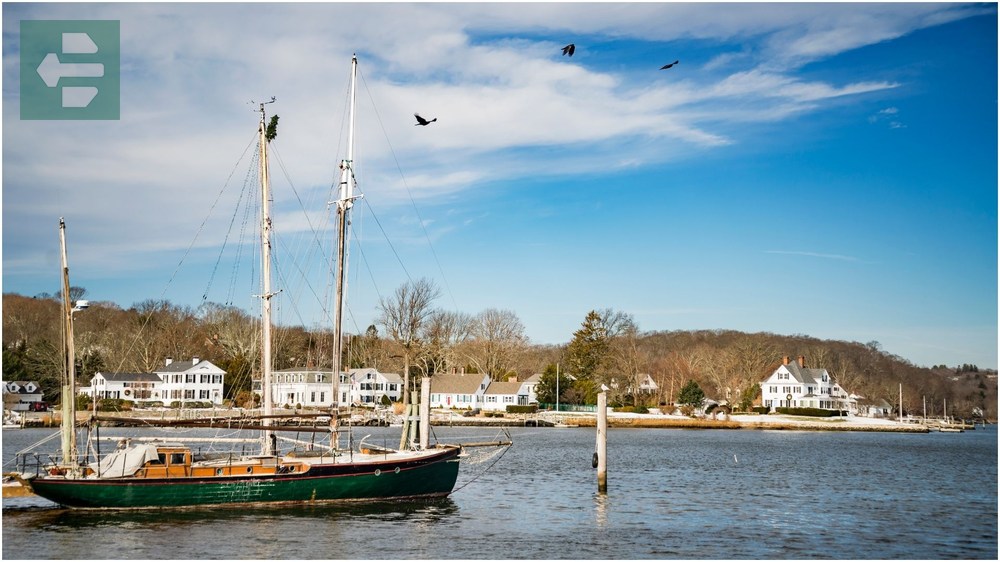
The Charles W. Morgan, America's last wooden whaling ship, sits permanently docked here. You can climb aboard and imagine the three-year voyages that once took crews around Cape Horn to the Pacific.
Downtown Mystic centers around the bascule bridge that opens every 40 minutes for boat traffic. The delay forces everyone to slow down and watch the boats pass—a built-in meditation break.
Quick Facts:
- Peak Season: May-October
- Getting There: Train from New York (2.5 hours) or Boston (2 hours)
- Entry Fee: Mystic Seaport from $32
- Suggested Stay: 2 days
- Key Spots: Mystic Seaport, Mystic Aquarium, Olde Mistick Village
6. Kennebunkport, Maine: Presidential Seaside Retreat
Kennebunkport balances presidential history with fishing village authenticity. The Bush family compound sits on Walker's Point, but the town's identity extends far beyond political connections.
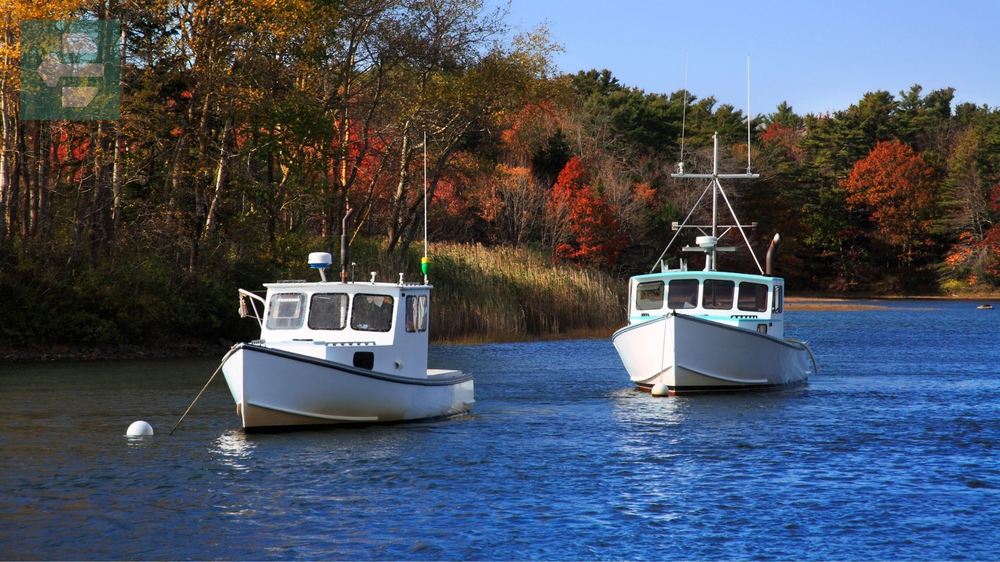
Dock Square serves as the compact downtown core. Galleries, boutiques, and restaurants occupy buildings that once stored fishing nets and lobster traps.
The Kennebunk River meets the sea at the harbor, where working lobster boats share moorings with pleasure yachts. Take the scenic drive along Ocean Avenue to see some of New England's most impressive coastal estates.
Quick Facts:
- Peak Season: June-September
- Getting There: Drive from Boston (2 hours)
- Entry Fee: Most attractions free
- Suggested Stay: 2-3 days
- Key Spots: Dock Square, Walker's Point, Colony Beach, Cape Porpoise
7. Portsmouth, New Hampshire: Seaport with Soul
Portsmouth packs 400 years of American history into a walkable downtown that spans just 16 square miles. The Piscataqua River powered sawmills and shipyards that built vessels for the Continental Navy.
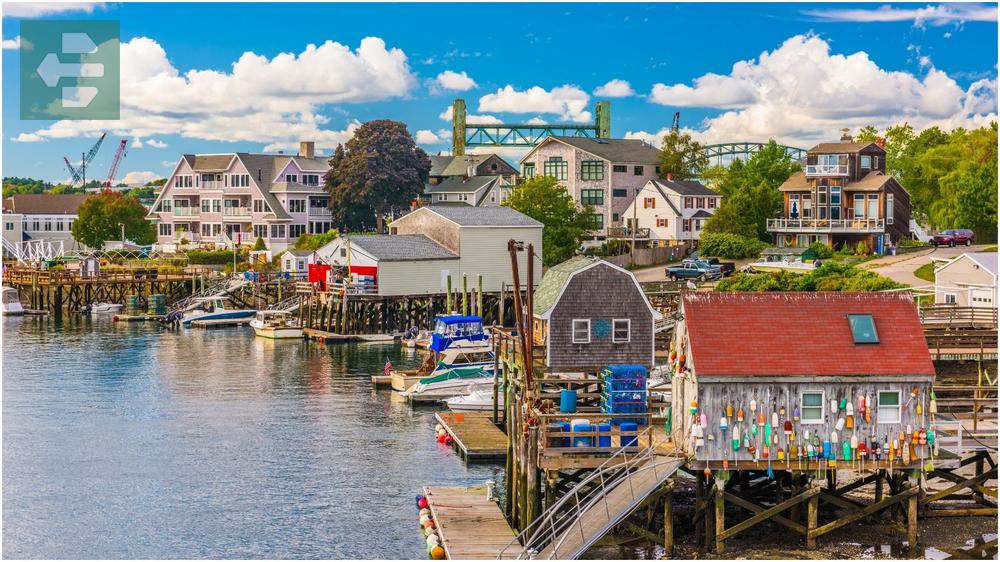
Market Square anchors the historic district with brick buildings that house independent shops and restaurants. The Music Hall, built in 1878, still hosts performances in its original Victorian interior.
The Strawbery Banke Museum recreates Portsmouth life across four centuries. Costumed interpreters demonstrate crafts in original buildings moved from around the city.
Quick Facts:
- Peak Season: May-October
- Getting There: Drive from Boston (1 hour)
- Entry Fee: Strawbery Banke from $20
- Suggested Stay: 2 days
- Key Spots: Market Square, Strawbery Banke, USS Albacore, Prescott Park
8. White Mountains, New Hampshire: Granite State Heights
The White Mountains rise abruptly from New Hampshire's forests, creating some of New England's most dramatic scenery. Mount Washington reaches 6,288 feet—the highest peak northeast of the Carolinas.
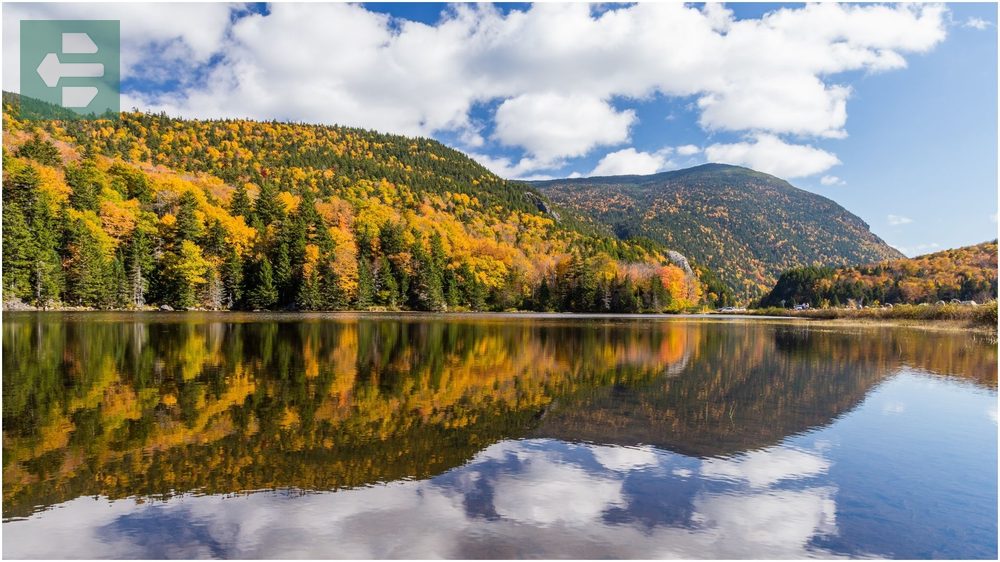
The Mount Washington Cog Railway climbs to the summit on the world's second-steepest railway. The three-hour round trip passes through four climate zones equivalent to traveling from New Hampshire to northern Canada.
Franconia Notch State Park showcases the Flume Gorge, where granite walls rise 90 feet above a rushing stream. The Old Man of the Mountain profile collapsed in 2003, but the area remains iconic.
Quick Facts:
- Peak Season: June-October (hiking), December-March (skiing)
- Getting There: Drive from Boston (2.5 hours)
- Entry Fee: Cog Railway from $41
- Suggested Stay: 3-4 days
- Key Spots: Mount Washington, Franconia Notch, North Conway, Jackson
9. Stowe, Vermont: Alpine Village Perfection
Stowe nestles in a valley beneath Mount Mansfield, Vermont's highest peak. The village maintains its postcard appearance year-round—white church steeples, covered bridges, and working farms.
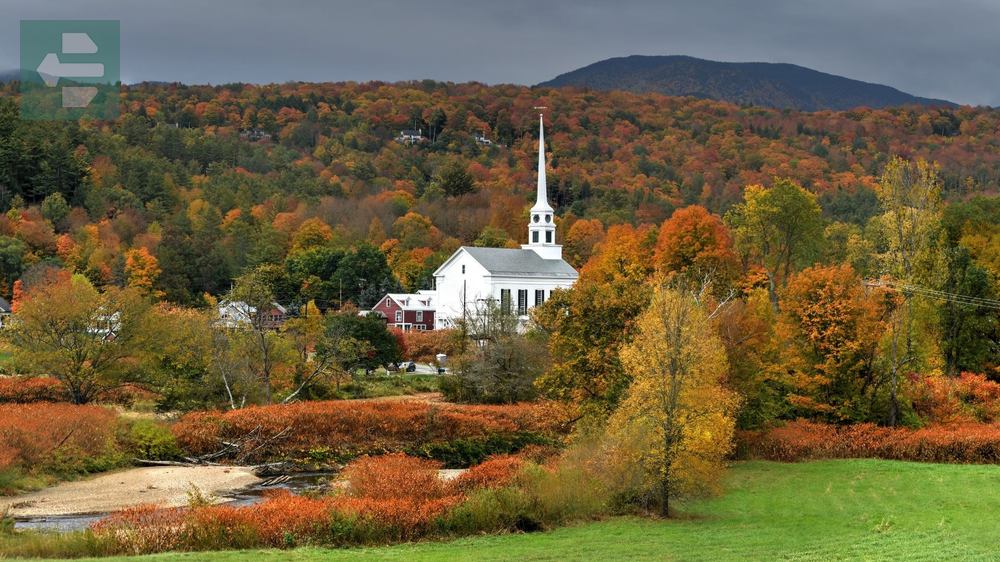
Mount Mansfield rises 4,393 feet above the valley floor. The Gondola SkyRide carries visitors to the Cliff House Restaurant, where panoramic views stretch across three states on clear days.
The Stowe Recreation Path follows a former railroad bed for 5.3 miles through farms and forests. The paved trail connects the village to the mountain base, passing red barns and maple groves.
Quick Facts:
- Peak Season: December-March (skiing), September-October (foliage)
- Getting There: Drive from Burlington (45 minutes)
- Entry Fee: Gondola from $25
- Suggested Stay: 3-4 days
- Key Spots: Mount Mansfield, Stowe Village, Recreation Path, Von Trapp Lodge
10. The Berkshires, Massachusetts: Cultural Countryside
The Berkshires blend cultural sophistication with rural beauty across western Massachusetts. Rolling hills dotted with farms create the backdrop for world-class arts venues.
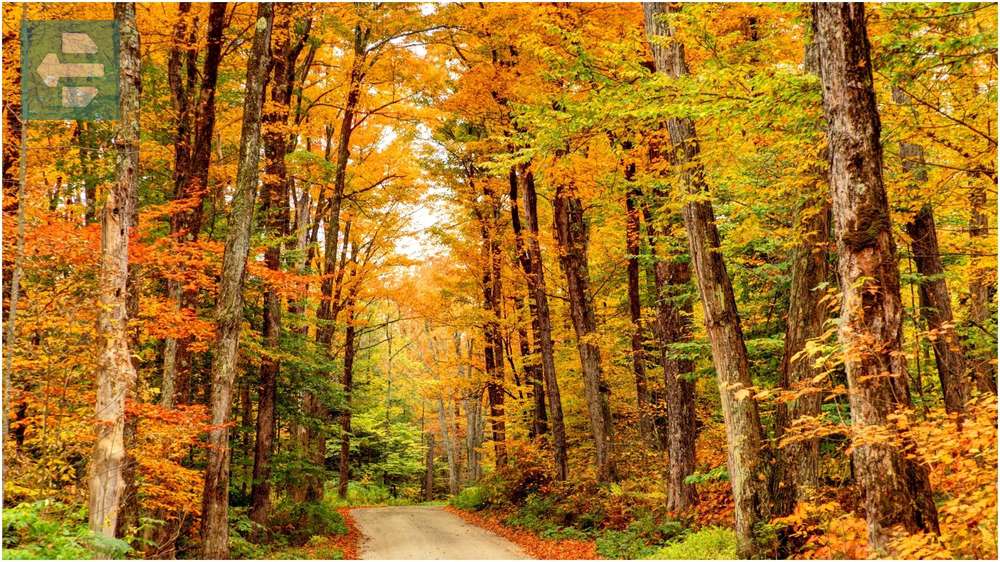
Tanglewood serves as summer home to the Boston Symphony Orchestra. Music lovers spread blankets on the Great Lawn while melodies drift from the open-sided Shed on summer evenings.
Lenox and Stockbridge maintain their Gilded Age elegance with preserved estates and manicured gardens. The Norman Rockwell Museum displays the largest collection of the artist's work in his hometown of Stockbridge.
Quick Facts:
- Peak Season: June-October
- Getting There: Drive from Boston (2.5 hours) or NYC (2.5 hours)
- Entry Fee: Tanglewood from $20
- Suggested Stay: 3-4 days
- Key Spots: Tanglewood, Norman Rockwell Museum, Mass MoCA, Stockbridge
11. Burlington, Vermont: College Town by the Lake
Burlington sits on Lake Champlain's eastern shore, with the Adirondacks rising across 12 miles of open water. The University of Vermont brings energy to this small city of 42,000 residents.
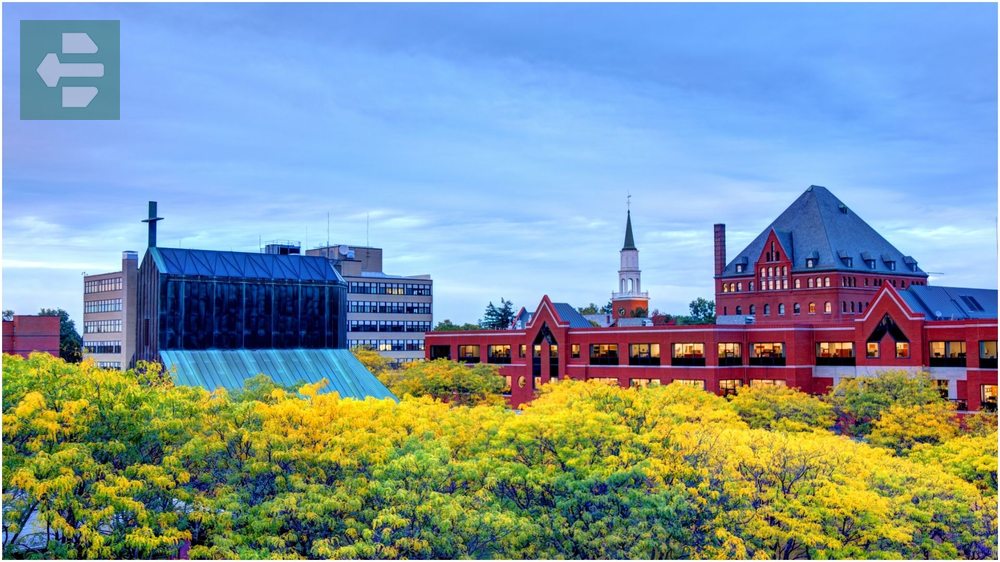
Church Street Marketplace creates a pedestrian mall through downtown's core. Local musicians perform while shoppers browse independent stores and cafes that reflect Vermont's creative spirit.
The Burlington Bike Path follows the lakefront for 7.6 miles, connecting parks and beaches along Champlain's shore. Rent a bike and stop at the floating docks to watch sailboats navigate between Vermont and New York.
Quick Facts:
- Peak Season: May-October
- Getting There: Fly direct or drive from Boston (3.5 hours)
- Entry Fee: Most attractions free
- Suggested Stay: 2-3 days
- Key Spots: Church Street, Lake Champlain, Shelburne Museum, Vermont Brewers Festival
12. Boston, Massachusetts: Revolutionary History Walks
Boston preserves America's revolutionary history while embracing its role as New England's modern capital. The Freedom Trail connects 16 historic sites with a red-brick path through downtown streets.
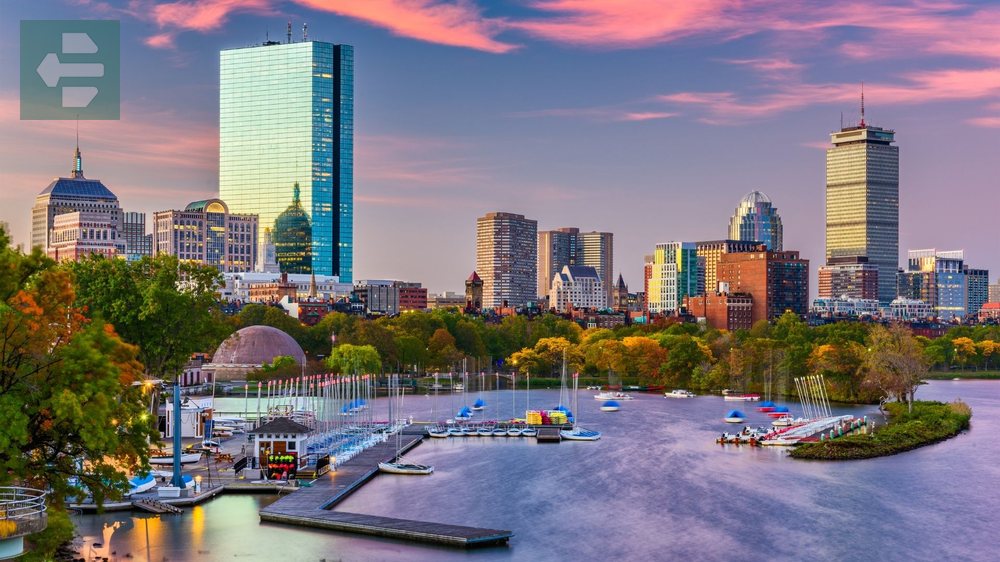
Faneuil Hall earned the nickname “Cradle of Liberty” for hosting the meetings that sparked the American Revolution. Today, street performers entertain crowds outside the building where Samuel Adams once rallied colonists.
The North End maintains its Italian-American character along narrow streets that follow 17th-century cow paths. Modern's Pastry and Mike's Pastry continue their legendary cannoli rivalry on Hanover Street.
Quick Facts:
- Peak Season: April-October
- Getting There: Major airport with direct flights worldwide
- Entry Fee: Freedom Trail self-guided (free)
- Suggested Stay: 3-4 days
- Key Spots: Freedom Trail, North End, Fenway Park, Harvard Square
13. Salem, Massachusetts: Beyond the Witch Trials
Salem transcends its witch trial notoriety to reveal America's maritime heritage. The Peabody Essex Museum houses the country's oldest continuously operating museum, founded by sea captains in 1799.
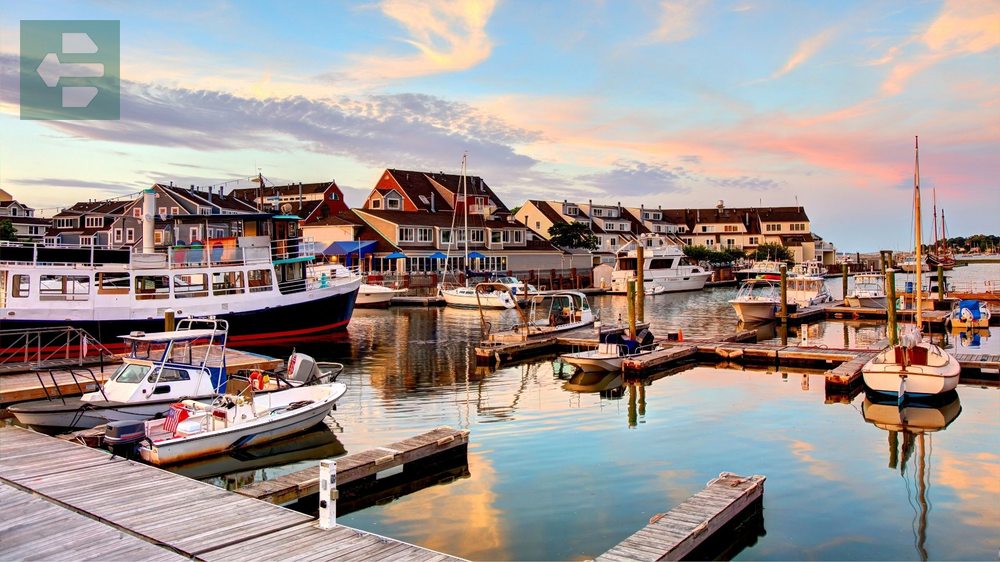
The House of Seven Gables inspired Nathaniel Hawthorne's novel and offers guided tours through its secret passages and hidden staircases. The adjacent Turner-Ingersoll Mansion showcases 17th-century architecture.
Chestnut Street displays Federal-period mansions built by Salem's merchant princes. These sea captains' homes feature widow's walks where wives watched for returning vessels laden with spices from the Far East.
Quick Facts:
- Peak Season: October (Halloween), June-September
- Getting There: Train from Boston (30 minutes)
- Entry Fee: House of Seven Gables from $17
- Suggested Stay: 1-2 days
- Key Spots: House of Seven Gables, Peabody Essex Museum, Salem Maritime, Chestnut Street
14. Woodstock, Vermont: New England's Perfect Village
Woodstock appears exactly as New England villages should look—white church steeples, covered bridges, and a village green surrounded by Federal and Victorian architecture. The town has maintained this appearance through careful preservation since the 1960s.
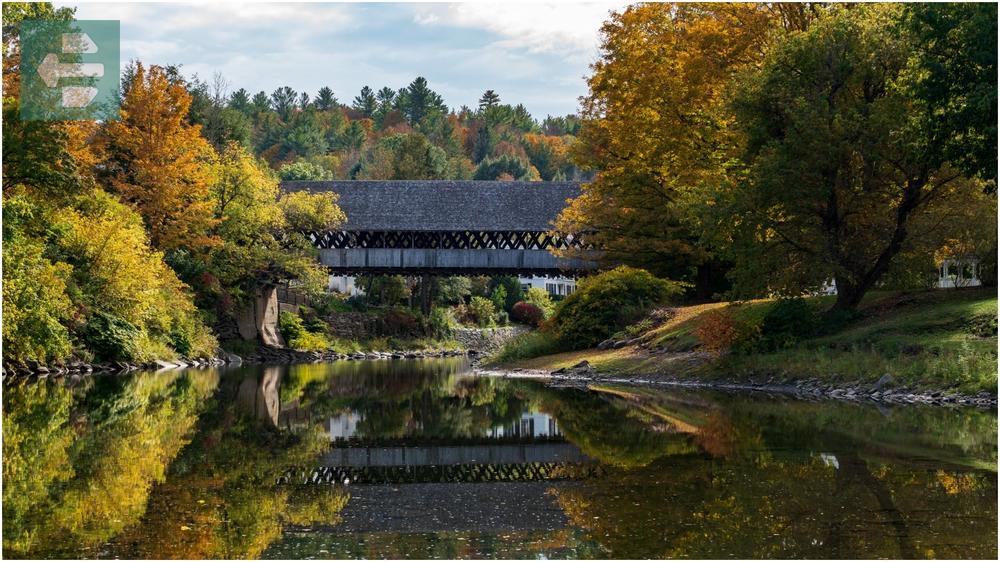
The Billings Farm & Museum demonstrates Vermont's agricultural heritage with working farm operations and exhibits about rural life. Jersey cows graze in pastures while heritage breed chickens roam the farmyard.
Mount Tom rises behind the village, accessible by a moderate hiking trail that rewards climbers with panoramic views of the Ottauquechee Valley. The trail passes through sugar maple groves that explode with color each October.
Quick Facts:
- Peak Season: September-October (foliage), December-March (skiing)
- Getting There: Drive from Boston (2.5 hours)
- Entry Fee: Billings Farm from $16
- Suggested Stay: 2-3 days
- Key Spots: Billings Farm, Sugarbush Resort, Mount Tom, Covered Bridge
New England rewards travelers who seek authentic experiences over Instagram moments. These 14 destinations offer the real story of American history and culture.
Pack comfortable walking shoes and an open mind. The region's compact size means you can wake up in a fishing village and end the day in a mountain town.
Your New England adventure waits just around the next covered bridge or beyond the next lighthouse beam. Each destination holds stories that shaped a nation—and memories that will reshape your understanding of America's roots.
